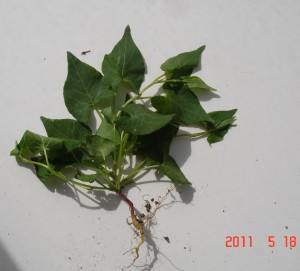Black Bindweed
Latin: Fallopia convolvulus
Irish: Glúineach dhubh
Specimens were collected at Castlewarden in a patch of bare ground on the mound beside the spinney at the pumphouse near the 13th green.
This is probably not a native species. It is a twining annual that can grow to a length of 80cm. It produces many small greenish-white or pink flowers from July onwards. It can be found frequently on roadsides, in hedges and on cultivated ground.
The seeds are edible, and were used in the past as a food crop, with remains found in Bronze Age middens. The seeds are too small and low-yielding to make a commercial crop, and it is now more widely considered a weed, occurring in crops, waste areas and roadsides. It can be a damaging weed when it is growing in a garden or crop, as it can not only damage the plant it entwines itself around, but can also hinder mechanised harvesting.
